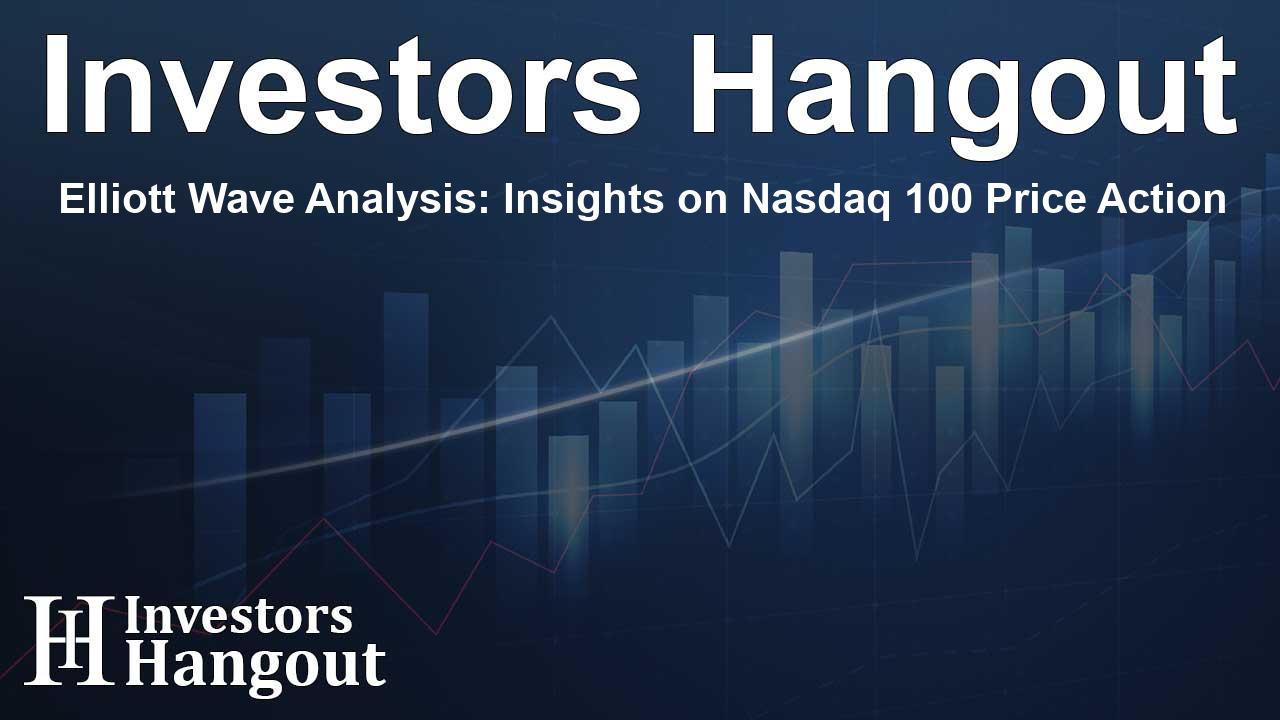Elliott Wave Analysis: Insights on Nasdaq 100 Price Action

Understanding the Current Nasdaq 100 Trends
In a recent analysis of the Nasdaq 100, noteworthy patterns based on the Elliott Wave (EW) Principle indicated the index's potential movements in the near future. The EW Principle is a remarkable tool that allows traders to assess price action and identify critical levels to watch for signaling changes in market sentiment.
The Recent Performance of Nasdaq 100
Recently, the index demonstrated a bullish trend, reaching an impressive peak at approximately $22041 before climbing to an all-time high (ATH) of $22915. This trajectory closely adhered to the projected wave patterns, showcasing the effectiveness of the EW methodology in predicting index behavior. The market's peaks and troughs were in close proximity to ideal targets, which provides confidence in the ongoing bullish sentiment.
Revising Warning Levels for Traders
As the index progressed, traders had to reassess their warning levels, establishing several thresholds to alert those entering the market. For instance, the first warning level for bullish traders is identified at $22733, followed by a second caution at $22587, and a critical threshold at $22386. Recognizing these pivotal prices helps traders maintain advantageous positions in the evolving market.
The Importance of Staying Informed
Understanding market dynamics and these warning levels is vital. Traders are encouraged to stay alert, especially as the index may shift, allowing them to maximize gains by knowing when to exit or remain invested. This proactive approach ensures that traders can navigate even the most volatile market conditions efficiently.
Interpreting Market Signals
As traders continue to analyze the market, vigilance becomes essential. The third wave (green W-3/c) is nearing its conclusion, but without definitive signals indicating an end, traders are advised to remain attentive to price movements. The role of technical indicators cannot be overstated, as they provide essential insights into potential market turns. Observing divergences on indicators like RSI5, MACD, and Money Flow can yield valuable clues about forthcoming price action.
Preparing for the Next Wave
Looking ahead, expectations are set for the formation of the next corrective phase—designated as the green W-4. By employing price action analysis through Elliott Wave theory, traders can anticipate shifts and adapt strategies quickly. While predicting future price movements can be challenging, relying on established warning levels simplifies decision-making.
The Role of Elliott Wave in Trading
Elliott Wave analysis empowers traders to identify profitable patterns in price movements. Its application can assist in determining ideal entry and exit points, substantially enhancing trading performance. Recognizing the current overall market conditions and adapting to fluctuations ensure traders remain well-positioned for success.
Concluding Thoughts on Nasdaq 100 Trends
In conclusion, the current trajectory of the Nasdaq 100, enriched by detailed analysis through the lens of Elliott Wave theory, underscores the importance of understanding existing market waves. As traders remain vigilant and receptive to market signals, they stand to benefit from the ongoing bullish environment while preparing for potential shifts ahead.
Frequently Asked Questions
What is the Elliott Wave Principle?
The Elliott Wave Principle is a method used in technical analysis that identifies potential price patterns and market trends to forecast future movements.
How has the Nasdaq 100 performed recently?
Recently, the Nasdaq 100 reached an all-time high of $22915, following a series of peaks and corrections, reflecting a strong bullish trend.
What do the warning levels signify?
Warning levels are price thresholds that traders use to gauge potential market shifts, allowing them to make informed trading decisions in response to market changes.
What can traders expect in the coming weeks?
Traders can anticipate a continuation of the current bullish trend, with the expectation for the green W-3/c wave to conclude soon, leading into a corrective phase.
How can technical indicators assist traders?
Technical indicators, like RSI and MACD, help traders identify market trends and potential reversals, providing insights that enhance trading accuracy.
About The Author
Contact Owen Jenkins privately here. Or send an email with ATTN: Owen Jenkins as the subject to contact@investorshangout.com.
About Investors Hangout
Investors Hangout is a leading online stock forum for financial discussion and learning, offering a wide range of free tools and resources. It draws in traders of all levels, who exchange market knowledge, investigate trading tactics, and keep an eye on industry developments in real time. Featuring financial articles, stock message boards, quotes, charts, company profiles, and live news updates. Through cooperative learning and a wealth of informational resources, it helps users from novices creating their first portfolios to experts honing their techniques. Join Investors Hangout today: https://investorshangout.com/
The content of this article is based on factual, publicly available information and does not represent legal, financial, or investment advice. Investors Hangout does not offer financial advice, and the author is not a licensed financial advisor. Consult a qualified advisor before making any financial or investment decisions based on this article. This article should not be considered advice to purchase, sell, or hold any securities or other investments. If any of the material provided here is inaccurate, please contact us for corrections.
